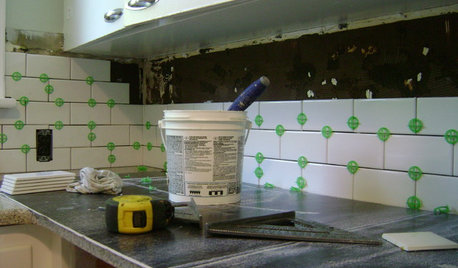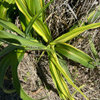Question About Rust
alameda/zone 8/East Texas
12 years ago
Related Stories

EXTERIORSCurb Appeal Feeling a Little Off? Some Questions to Consider
Color, scale, proportion, trim ... 14 things to think about if your exterior is bugging you
Full Story
KITCHEN DESIGNKitchen of the Week: Making Over a Rental for About $1,500
Fresh paint, new hardware, added storage, rugs and unexpected touches breathe new life into a Los Angeles apartment’s kitchen
Full Story
MOST POPULAR19 Kitchen Projects Every Homeowner Should Know About
Could your kitchen use a new sink, a backsplash, updated hardware, better organization, a good cleaning? Here's how to get started
Full Story
GREAT HOME PROJECTSWhat to Know About Adding a Reclaimed-Wood Wall
Here’s advice on where to put it, how to find and select wood, what it might cost and how to get it done
Full Story
Easy Green: 6 Must-Answer Questions Before You Buy
Thinking about buying ecofriendly furniture? For a truly environmentally conscious home, ask yourself these questions first
Full Story
WORKING WITH PROS10 Questions to Ask Potential Contractors
Ensure the right fit by interviewing general contractors about topics that go beyond the basics
Full Story
MOST POPULAR8 Questions to Ask Yourself Before Meeting With Your Designer
Thinking in advance about how you use your space will get your first design consultation off to its best start
Full Story
ORGANIZINGPre-Storage Checklist: 10 Questions to Ask Yourself Before You Store
Wait, stop. Do you really need to keep that item you’re about to put into storage?
Full Story
REMODELING GUIDES9 Hard Questions to Ask When Shopping for Stone
Learn all about stone sizes, cracks, color issues and more so problems don't chip away at your design happiness later
Full Story
GREEN BUILDINGConsidering Concrete Floors? 3 Green-Minded Questions to Ask
Learn what’s in your concrete and about sustainability to make a healthy choice for your home and the earth
Full Story









Ed
dementieva
Related Professionals
Fillmore Landscape Architects & Landscape Designers · Saint Louis Park Landscape Architects & Landscape Designers · Willowick Landscape Architects & Landscape Designers · Centereach Landscape Contractors · Damascus Landscape Contractors · Gresham Landscape Contractors · Kerman Landscape Contractors · Maywood Landscape Contractors · Methuen Landscape Contractors · Mission Landscape Contractors · Mount Sinai Landscape Contractors · Northbridge Landscape Contractors · Overland Park Landscape Contractors · Alamo General Contractors · Winton General ContractorsNancy Barginear
Maryl (Okla. Zone 7a)
random_harvest
alameda/zone 8/East TexasOriginal Author
Ed
Maryl (Okla. Zone 7a)
Ed
Maryl (Okla. Zone 7a)
terrene
Ed
floota
terrene
Ed
Maryl (Okla. Zone 7a)
Ed
alameda/zone 8/East TexasOriginal Author
dementieva
Ed
dementieva